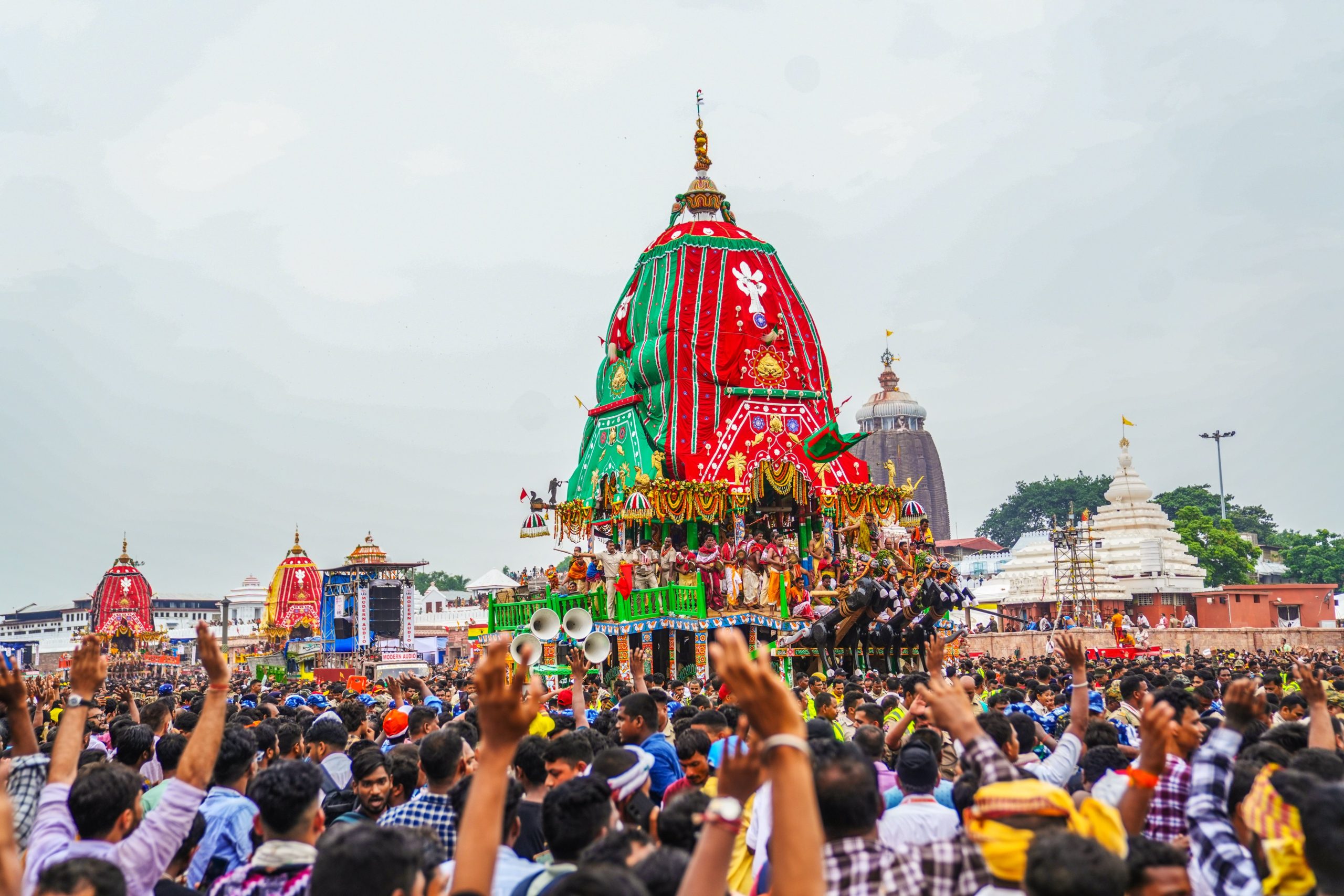Puri: Today, on the auspicious occasion of the Rath Jatra, the Grand Road of Puri resonates with devotional fervor as Shree Balabhadra Rath, famously known as ‘Taladhwaja’, began its journey towards the Shree Gundicha Temple.
This magnificent chariot, bearing Lord Balabhadra, the elder brother of Lord Jagannath, is a marvel of traditional craftsmanship and holds immense spiritual significance for millions of devotees.
As Taladhwaja majestically rolls down the Grand Road, pulled by the fervent devotion of thousands, it serves as a powerful reminder of faith, tradition, and the omnipresent grace of Lord Balabhadra.
The collective chants of “Jai Balabhadra!” reverberate through the air, creating an atmosphere charged with spiritual energy, as devotees partake in this timeless spectacle of devotion.
The construction of Taladhwaja, like its sibling chariots, is an extraordinary annual undertaking rooted in ancient Shilpa Shastras and passed down through generations of skilled artisans. Each year, new chariots are meticulously built from specific types of wood, primarily Phassi and Dhausa trees. The process begins on Akshaya Tritiya, with a ritualistic fire worship and the blessing of the Biswakarma Sevaks (chief carpenters).
For Taladhwaja, approximately 763 pieces of wood are used. The construction involves a dedicated team of carpenters, blacksmiths, painters, and Bhoi servitors, all working with profound devotion. It’s remarkable to note that the chariots are assembled using traditional joinery techniques, without the use of nails or screws, a testament to the mastery of the craftsmen. The entire construction process spans about 58 days, culminating in these towering structures.
Taladhwaja is the second largest of the three chariots.
- Height: Approximately 44 feet (13.2 meters)
- Wheels: It stands on 14 wheels, each with a diameter of about 6.6 feet.
- Canopy Colors: Its distinctive canopy is adorned with vibrant green and red cloth. Green symbolizes nature, growth, and renewal, reflecting Lord Balabhadra’s connection to the earth and his role as a protector. Red signifies power, strength, and protection.
- Horses: Taladhwaja is pulled by four black horses named Tibra, Ghora, Dirghashrama, and Swarnanava.
- Guardian Deity: Lord Balabhadra’s chariot is guarded by Vasudev.
- Charioteer: The charioteer for Taladhwaja is Matali.
- Flag Name: The flag adorning the chariot is known as Unnani, bearing the emblem of a Palm Tree (Tala, hence Taladhwaja).
- Weapons: The chariot prominently displays the weapons associated with Lord Balabhadra: Hala (plough) and Musala (mace).
- Rope Name: The rope used by devotees to pull Taladhwaja is known as Basuki.
- Parswadevatas (Subsidiary Deities): Along with Lord Balabhadra, the chariot carries idols of Ganesha, Kartikeya, Sarvamangala, Pralambari, Halayudha, Mrutyunjaya, Natamvara, Mukteshwar, and Sheshadeva.
- Face of the Chariot: The front of Taladhwaja is known as Ketu Bhadra.
The Rath Jatra, and particularly the journey of Taladhwaja, holds profound spiritual significance for devotees.
- Divine Darshan: For many, the Rath Jatra is a rare opportunity to witness Lord Balabhadra, Lord Jagannath, and Devi Subhadra outside the confines of the temple, making them accessible to all, regardless of caste or creed.
- Forgiveness of Sins and Blessings: It is deeply believed that merely beholding the deities on their chariots during this sacred journey absolves one of sins and bestows immense blessings, freeing individuals from the cycle of rebirth.
- Symbol of Equality: The participation of the King of Puri, who ceremonially sweeps the chariots (Chhera Pahanra ritual), emphasizes the message of equality before God, where everyone, irrespective of their social standing, is equal in the eyes of the divine.
- Journey of Liberation: The Rath Jatra symbolizes the deities’ journey to their aunt’s abode, the Shree Gundicha Temple, which is also seen as a symbolic representation of their birthplace. More broadly, it is viewed as a journey of the soul towards liberation and a manifestation of the Lord’s desire to meet and bless His devotees on the earthly plane.
- Connection to Nature: Lord Balabhadra’s association with agriculture and strength, reflected in the green hues and agricultural implements on his chariot, highlights his connection to nature and his role as a provider and protector.


